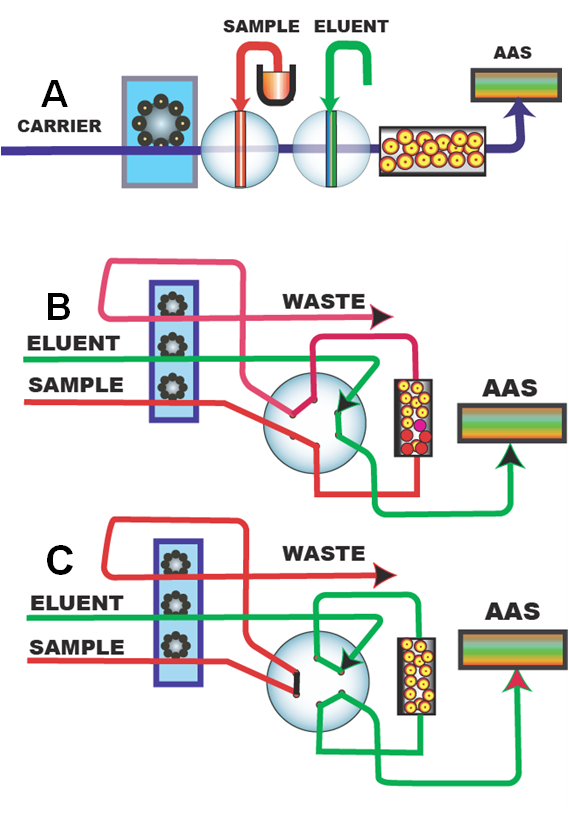Sorbent Extraction for Atomic Spectroscopies
On-line microcolumns are widely used for preconcentration of target analytes and matrix removal. The simplest configuration of FI manifold (A) (Olsen 1983), saves sample and eluant, but limits the sample volume used for preconcentration, and exposes the AAS to matrix.
By nesting the microcolumn in a valve (Fang 1993), the injected sample volume is determined by flow rate and by time while the target analyte is accumulated on the column (B). By switching
the valve, the accumulated analyte is eluted (C), by reversed flow from the column into the AAS.
Typical applications are trace element assays (Pb, Cd, Cu, Ni, Zn, Mn, Al, Cr. Ti, V, Ce, Co etc), by either Atomic Absorption or by ICP-MS. The matrices range from sea water to fertilizersand biological samples.
1.3.14.

The stationary phase, besides sorbent extraction based chelating agents (8-hydoxyquinoline, DDC), were ion exchangers and Chelex 100 resin. Flow system and column designs, as well as optimization techniques, are reviewed by Fang 1993, while the most recent advances are discussed in Hansen and Miró 2008 and in Miró and Hansen 2006 and Motomizu and Sakai 2008.
Olsen S. at al. Analyst 108(1983) 905
Fang Zhaolun Flow injection Separation and PreconcentrationVCH Publishers Weinheim 1993
Atomic Spectroscopic Detection. E.H.Hansen and M. Miró Ch. 14 in: Advances In Flow
Injection Analysis and Related Techniques, S.D.Kolev and I.D. McKelvie Elsevier 2008
On-line Sample Pretreatment. S. Motomizu and T. Sakai Chapter 7 in: Advances In Flow Injection Analysis and Related Techniques, S.D.Kolev and I.D. McKelvie Elsevier 2008









